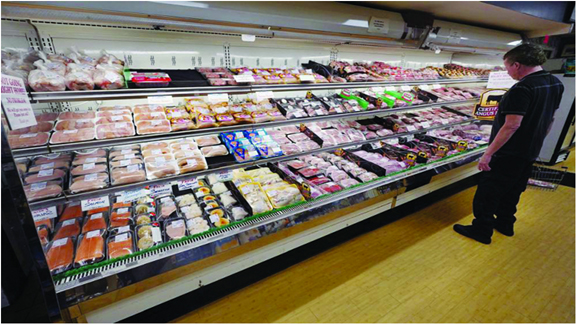WASHINGTON (TIP)- Last year, it was a nasty surprise. And it wasn’t supposed to last. But now, inflation has become an ongoing financial strain for millions of Americans filling up at the gas station, lined up at a grocery checkout lane, shopping for clothes, bargaining for a car or paying monthly rent. For the 12 months ending in January, inflation amounted to 7.5% — the fastest year-over-year pace since 1982 — the Labor Department said Thursday. Even if you toss out volatile food and energy prices, so-called core inflation jumped 6% over the past year. That was also the sharpest such jump in four decades.
Consumers felt the price squeeze in everyday routines. Over the past year, prices rose 41% for used cars and trucks, 40% for gasoline, 18% for bacon, 14% for bedroom furniture, 11% for women’s dresses.
The Federal Reserve didn’t anticipate an inflation wave this severe or this persistent. In December 2020, the Fed’s policymakers had forecast that consumer inflation would stay below their 2% annual target and end 2021 at around 1.8%.
But after having been an economic afterthought for decades, high inflation reasserted itself last year with brutal speed. In February 2021, the government’s consumer price index was running just 1.7% ahead of its level a year earlier. From there, the year-over-year price increases accelerated steadily — 2.7% in March, 4.2% in April, 4.9% in May, 5.3% in June.
By October, the figure was 6.2%, by November 6.8%, by December 7.1%.
For months, Fed Chair Jerome Powell and others characterized higher consumer prices as merely a “transitory” problem — the result, mainly, of shipping delays and temporary shortages of supplies and workers as the economy rebounded from the pandemic recession much faster than anyone had anticipated.
Now, many economists expect consumer inflation to remain elevated well into this year, with demand outstripping supplies in numerous areas of the economy. “Inflation remains the single largest near-term challenge to the economy,? said Jim Baird, chief investment officer at Plante Moran Financial Advisors. “Although price pressures are expected to ease as the year progresses, inflation will remain above the Fed’s 2% target for some time to come.?
So the Fed has radically changed course. Last month, the central bank signaled that it will begin a series of rate hikes in March. By doing so, the Fed is moving away from the super-low rates that helped revive the economy from 2020’s devastating pandemic recession but that also helped fuel surging consumer prices.
Good news — mostly. When the pandemic paralyzed the economy in the spring of 2020 and lockdowns kicked in, businesses closed or cut hours and consumers stayed home as a health precaution, employers slashed a breathtaking 22 million jobs. Economic output plunged at a record-shattering 31% annual rate in last year’s April-June quarter.
Everyone braced for more misery. Companies cut investment and postponed restocking. A brutal recession ensued.
But instead of sinking into a prolonged downturn, the economy staged an unexpectedly rousing recovery, fueled by vast infusions of government aid and emergency intervention by the Fed, which slashed interest rates, among other things. By spring of last year, the rollout of vaccines had emboldened consumers to return to restaurants, bars, shops and airports. Source: AP
